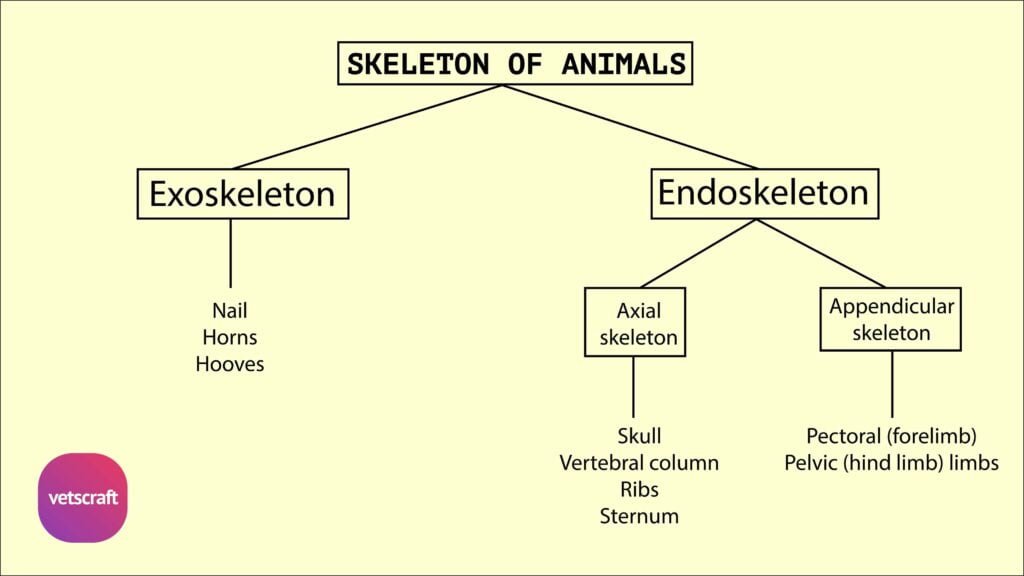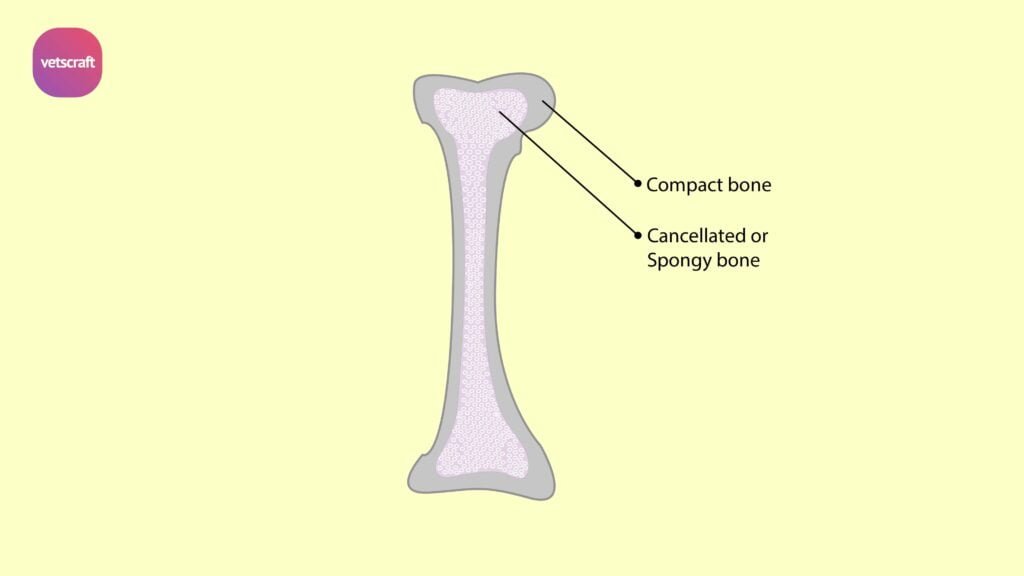TABLE OF CONTENTS
Anatomy of Thoracic Vertebrae in Animals
The thoracic vertebrae are the segment of the vertebral column located between the cervical and lumbar regions and are anatomically defined by their articulation with the ribs via costal facets.
Each thoracic vertebra typically comprises a vertebral body, a prominent dorsal spinous process, transverse processes (which may bear tubercular facets), and cranial and caudal articular facets for vertebral articulation.
Thoracic Vertebrae of Ox
Thoracic vertebrae are 13 in number in ox, and the characteristic features of these vertebrae are the great development of neural spines and the presence of capitular facets on the body and tubercular facets on the transverse processes for articulation with the ribs.
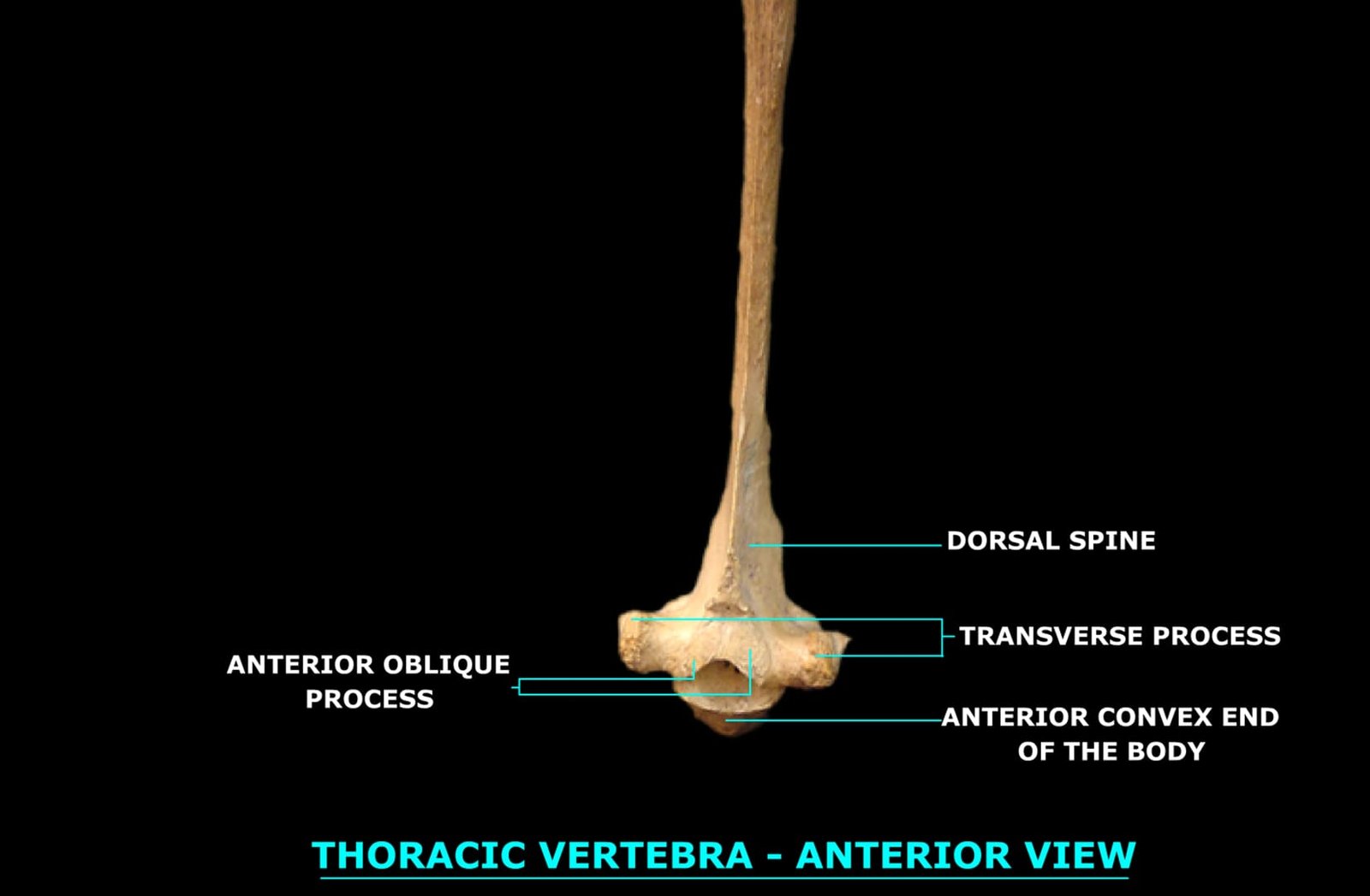
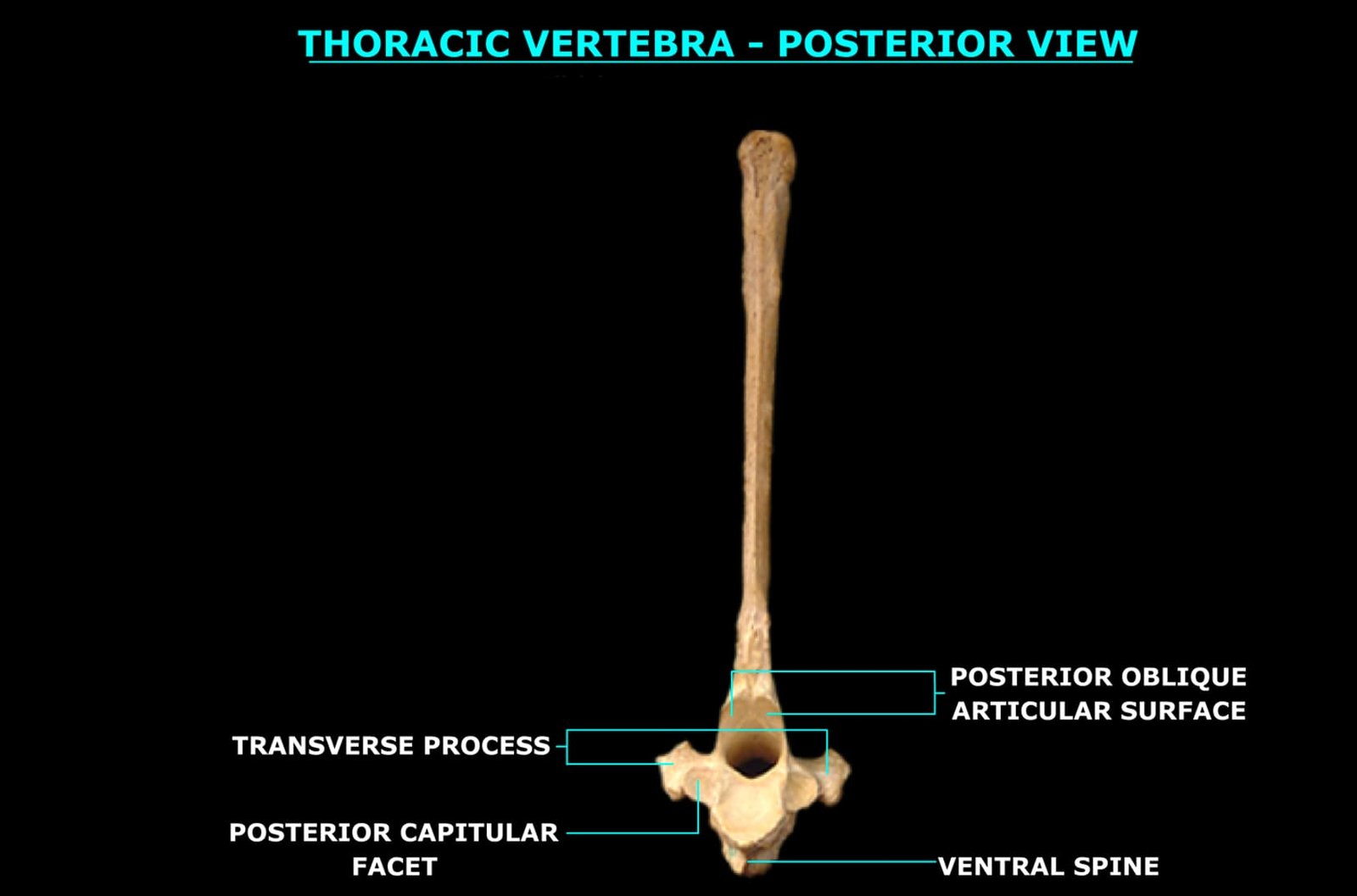
The bodies are shorter. On the sides of the articular ends of the body, both before and behind, are concave articular facets—the costal or capitular facets—which, along with those of the adjacent vertebrae and the intervertebral disc, form capitular or costal cavities for articulation with the heads of ribs. The anterior notches of the pedicle are shallower, and the posterior ones are converted into foramina in the posterior series.
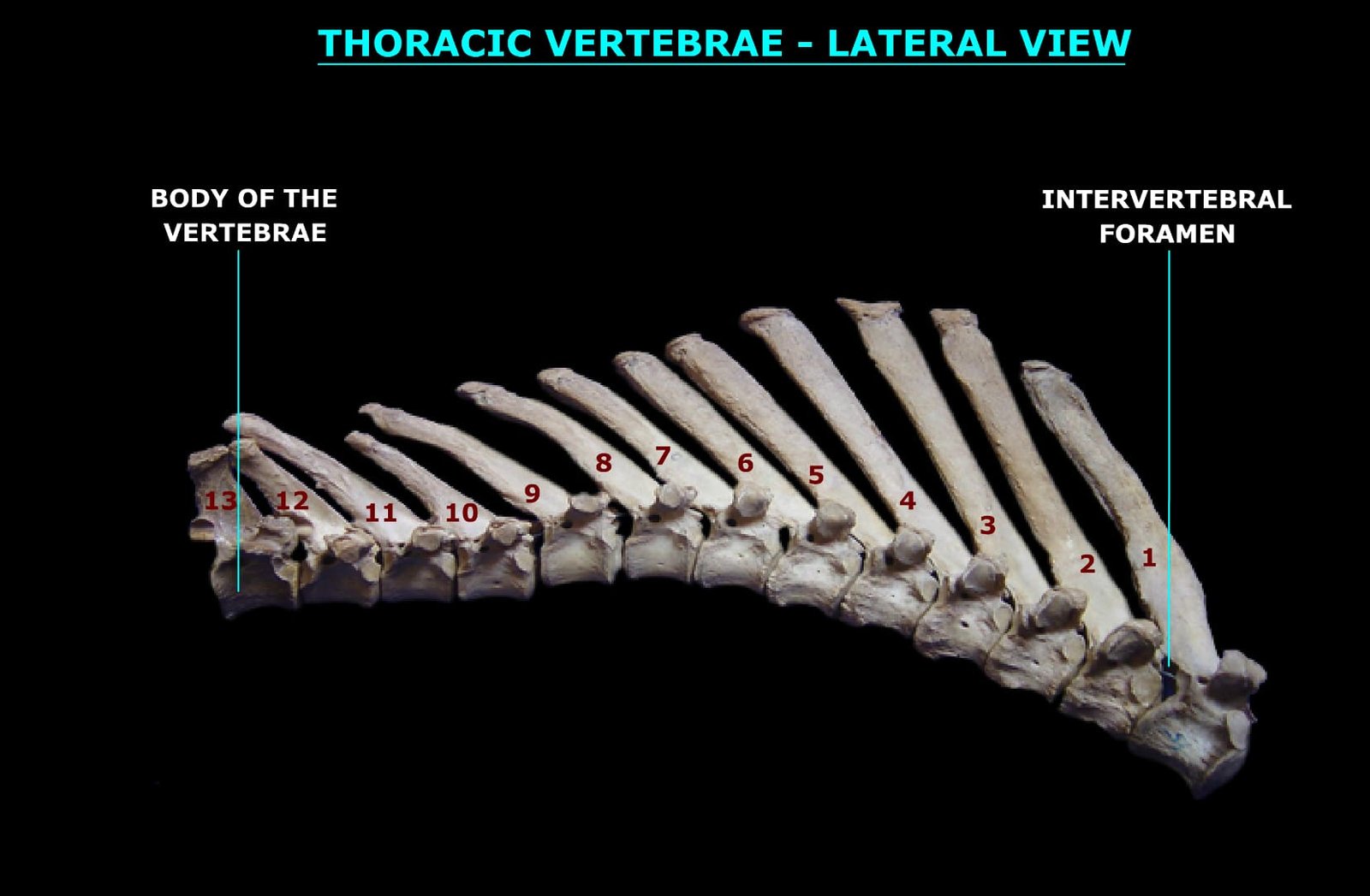
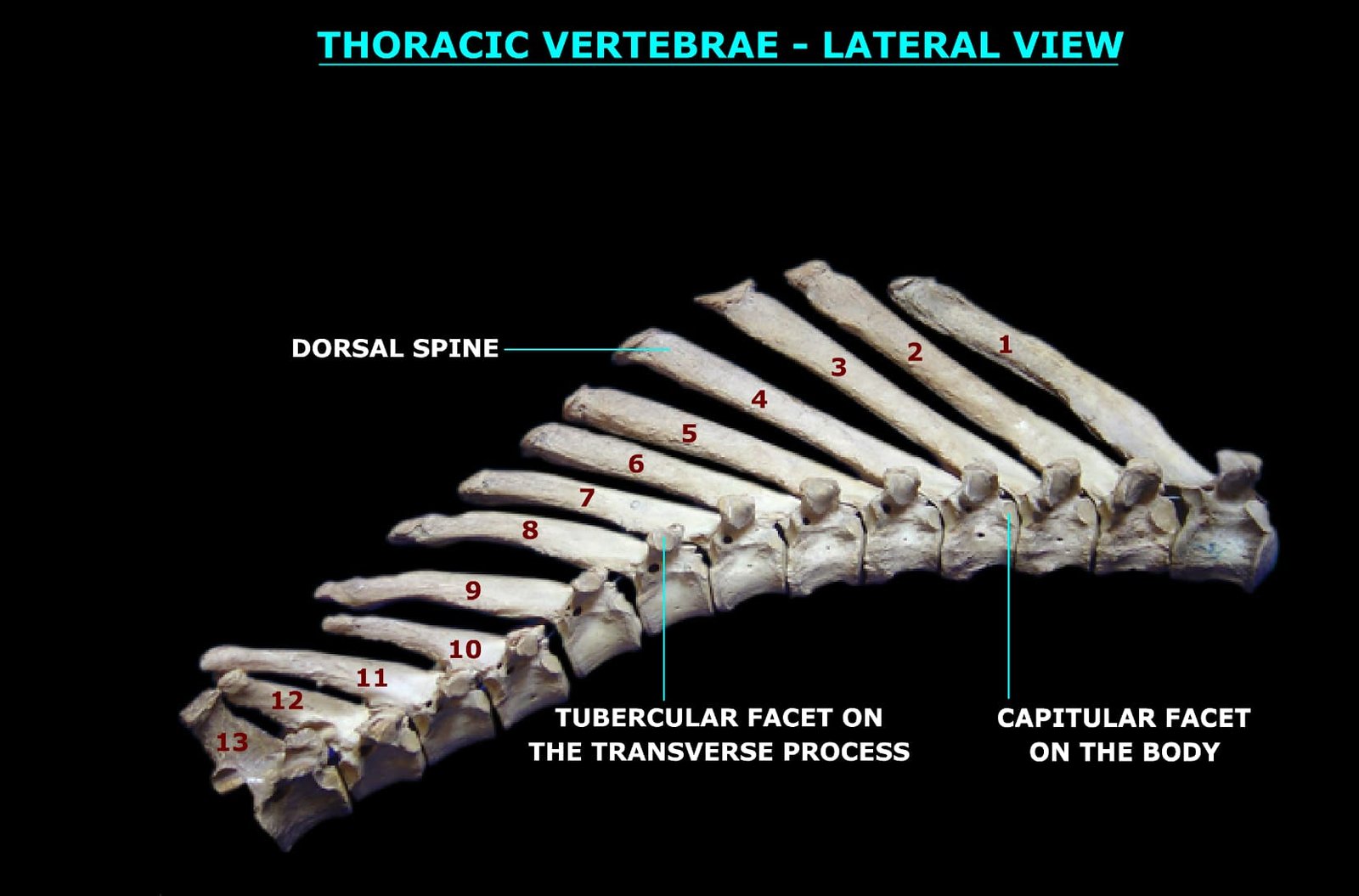
The articular processes are small. The anterior ones are represented by small oval facets on the anterior part of the arch, except in the first one where they surmount the transverse processes. The posterior ones spring from the base of the spinous process.
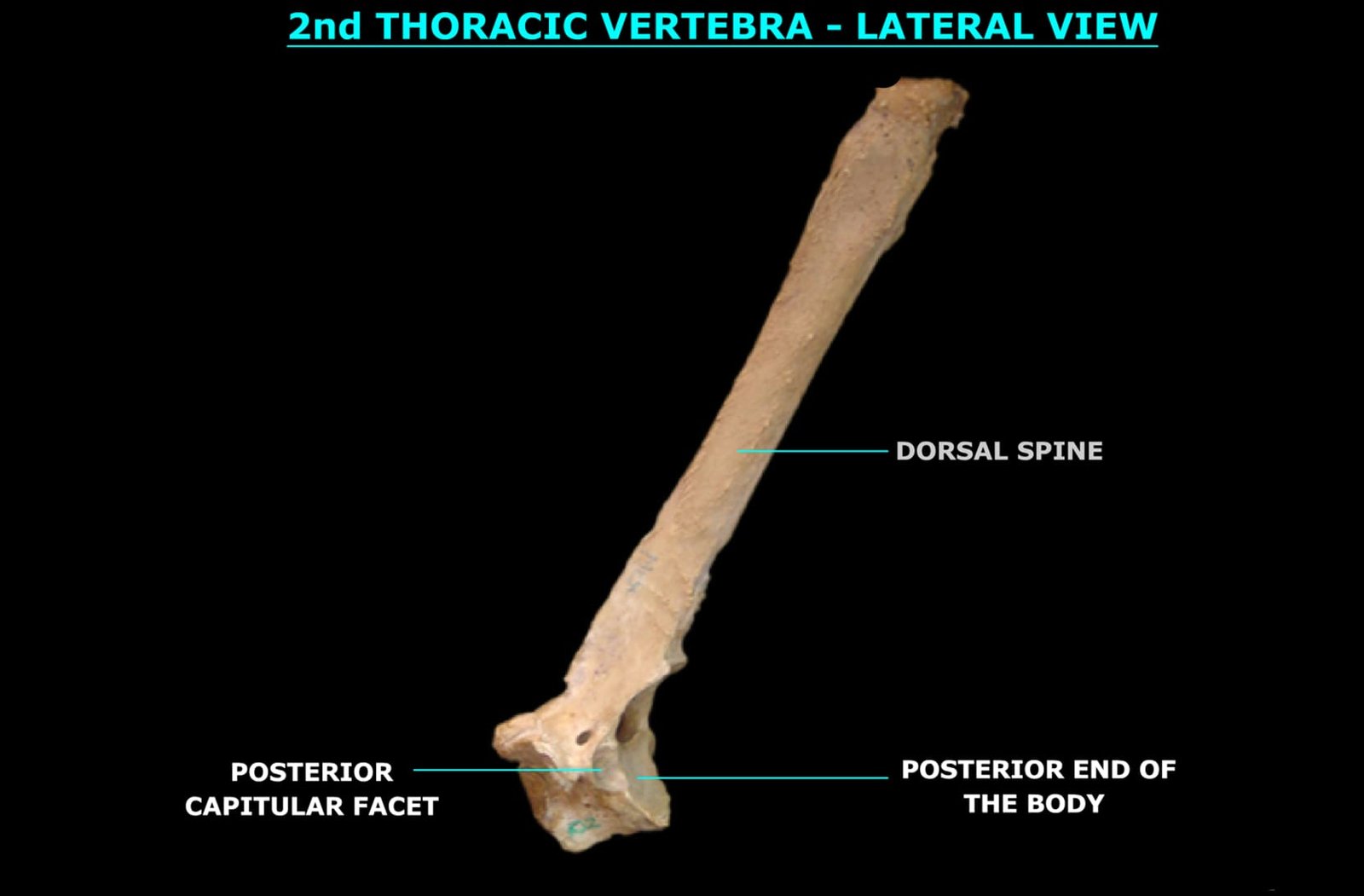
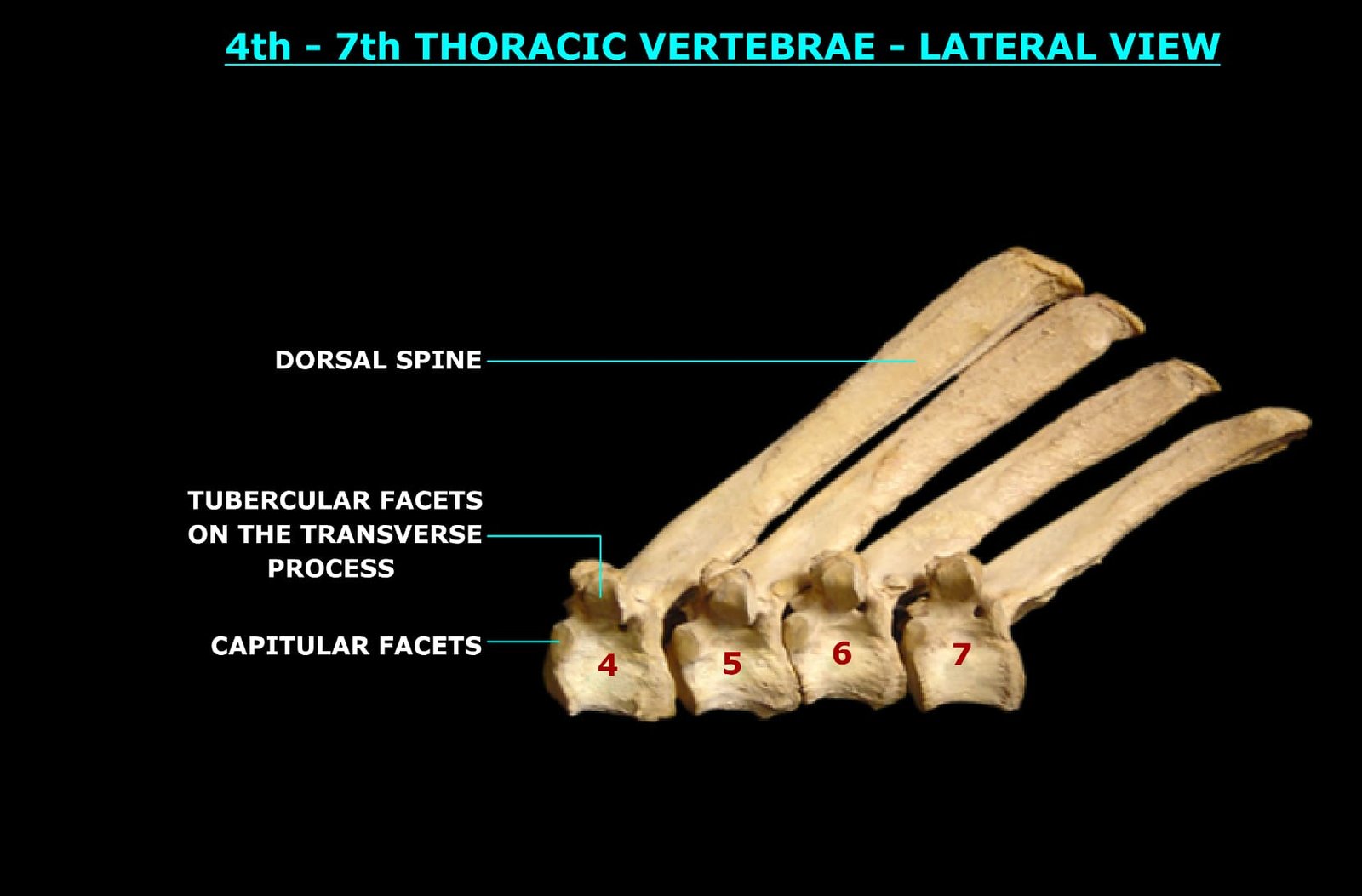
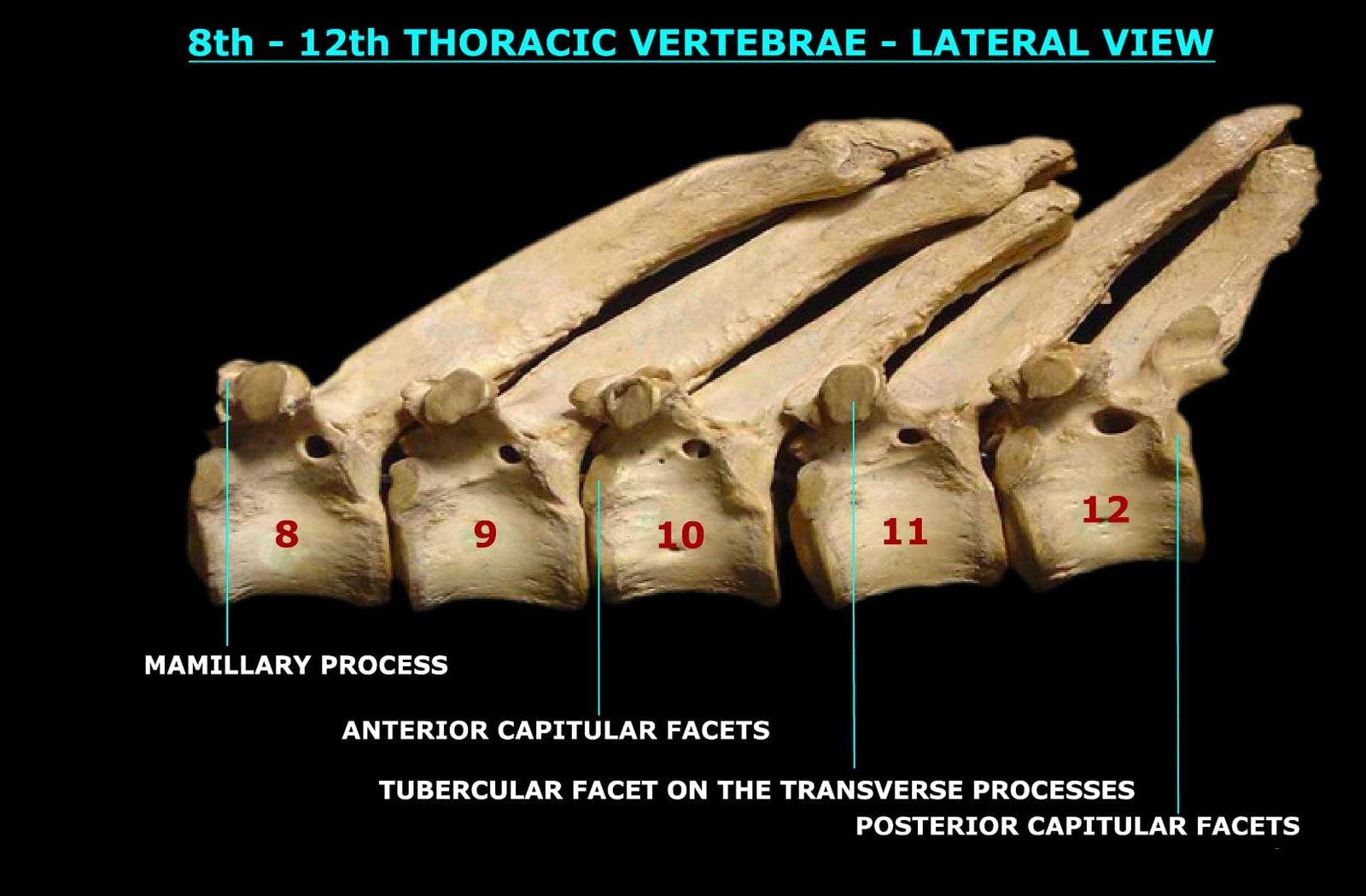
The transverse processes, though prominent, do not always articulate with ribs.
The spinous process is very long and of enormous size, which is characteristic of the vertebrae of this region. Each is a flattened plate that serves for the attachment of the spinal muscles and ligaments.
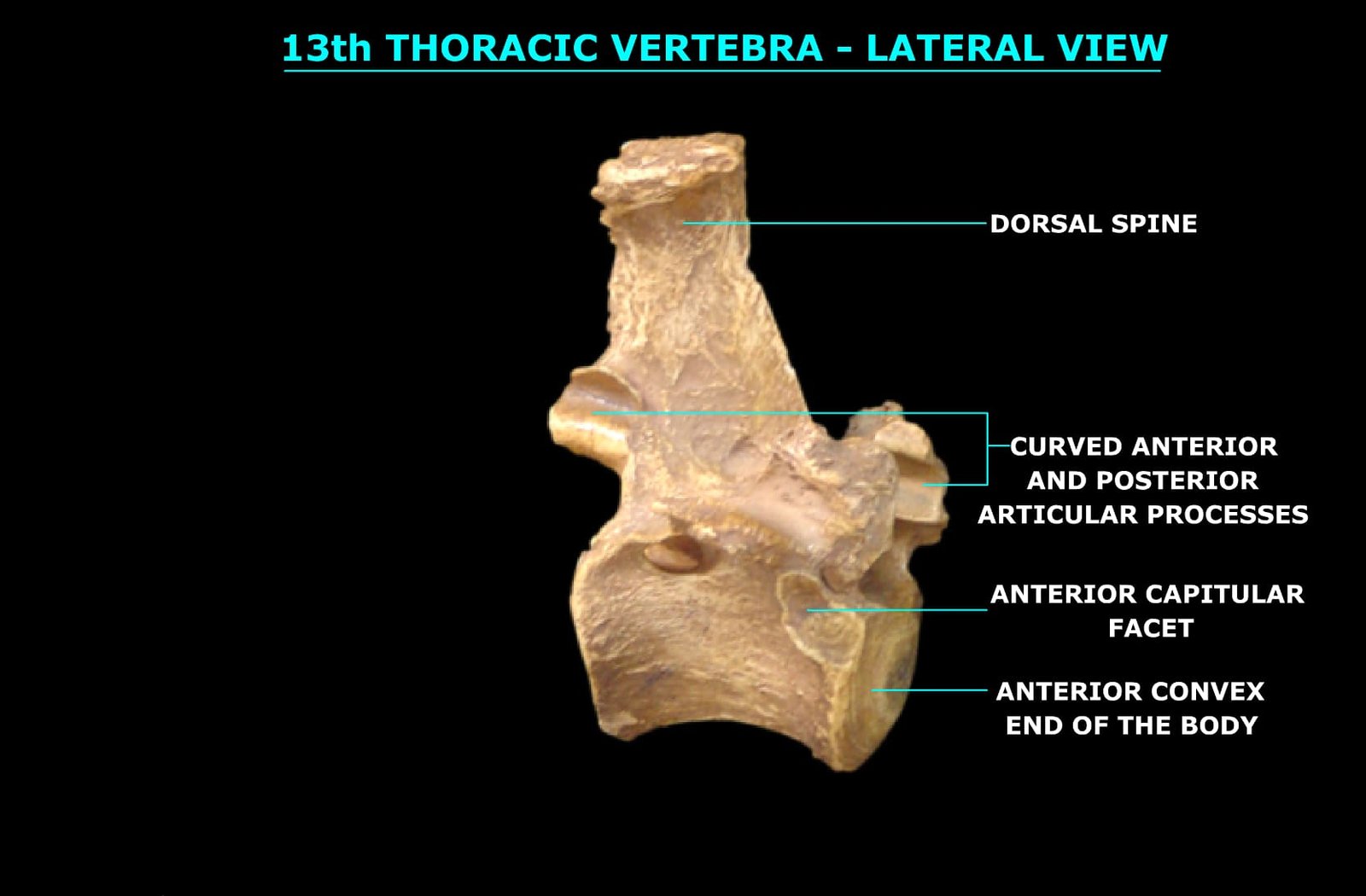
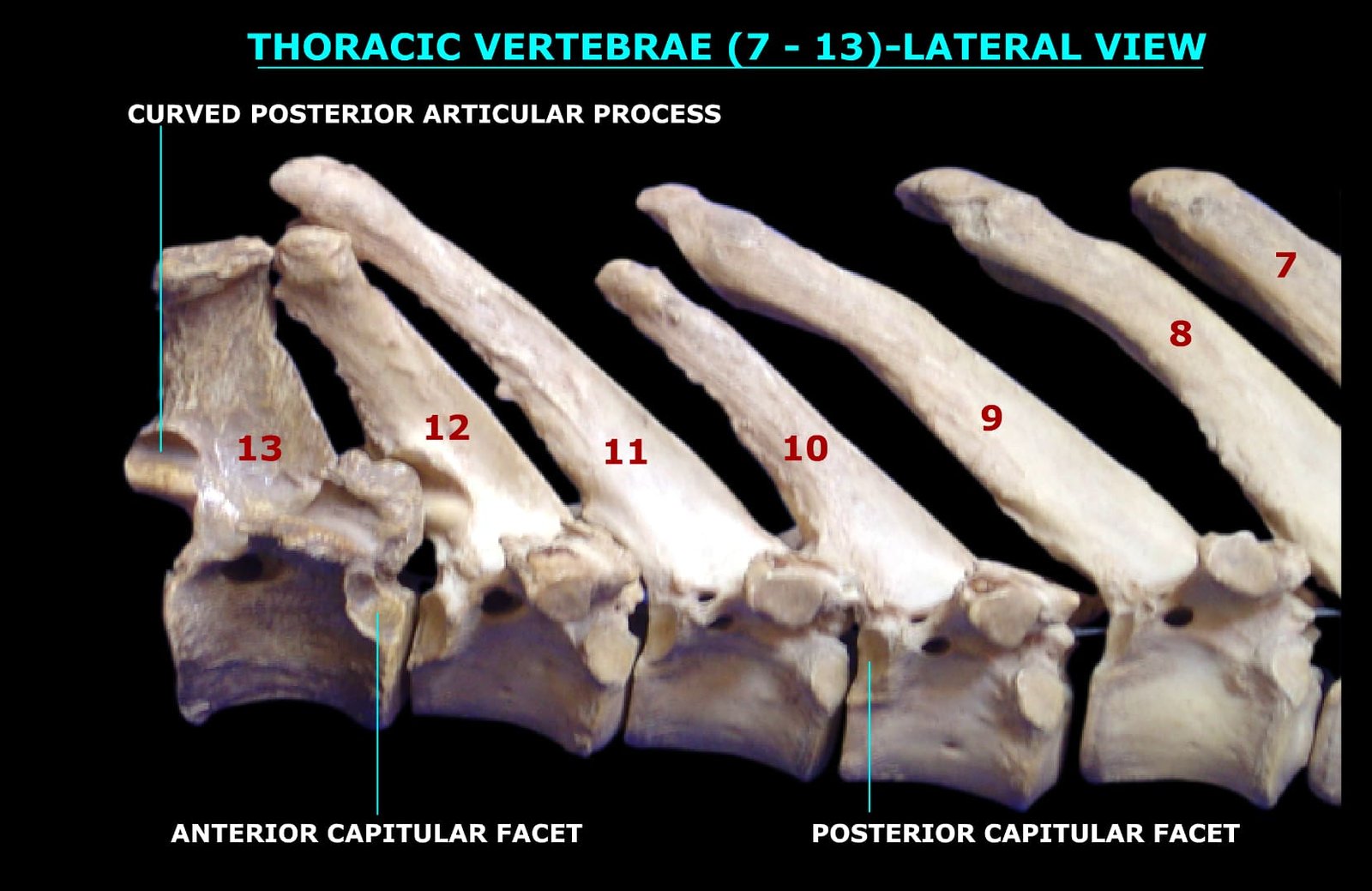
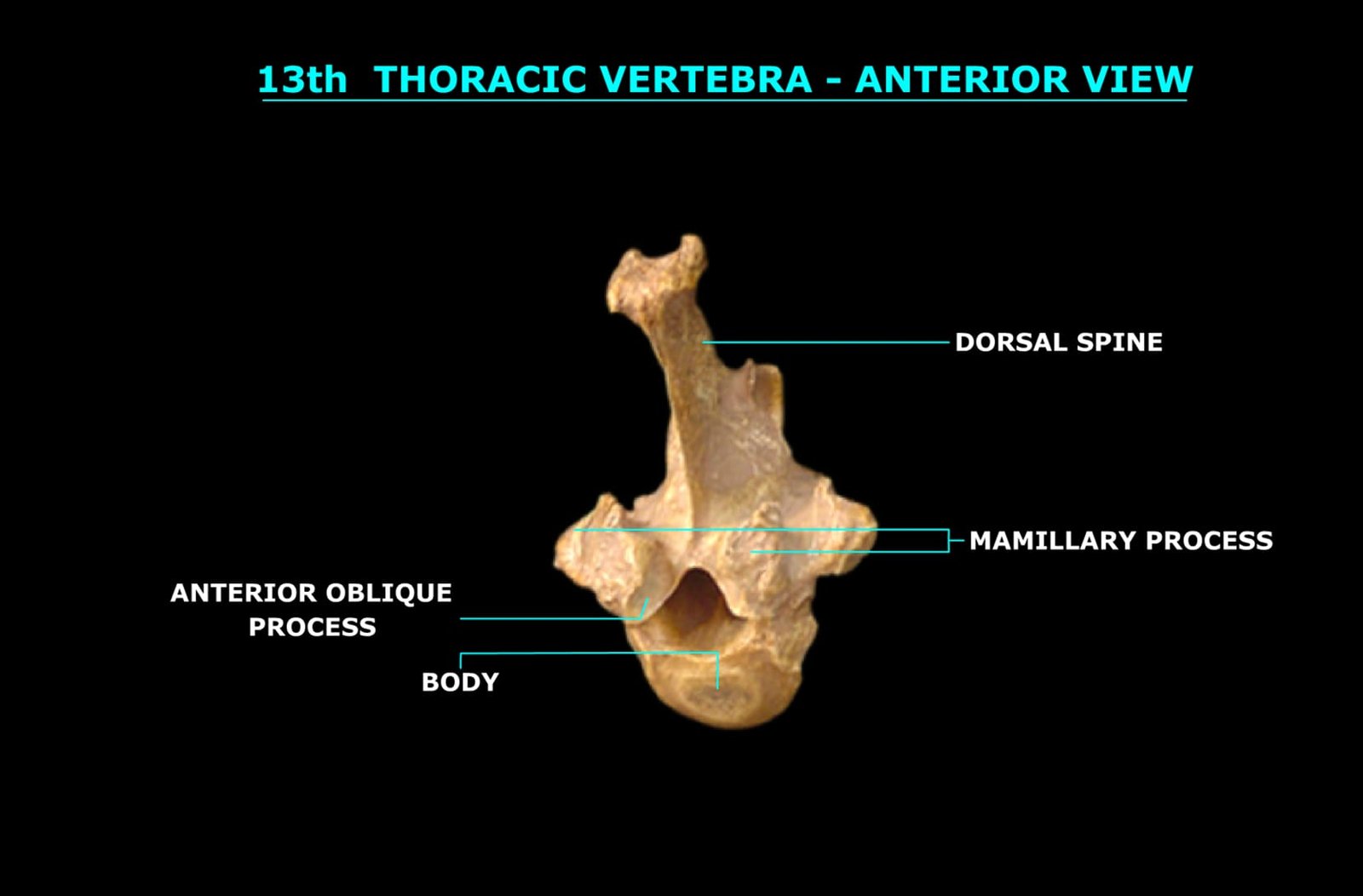
Special Features
Special features of thoracic vertebrae in ox are:
- The anterior vertebrae in the series bear rounded mammillary processes.
- The spine of the first is very long and is usually pointed.
- The spines of the next two are the longest, and behind these, they gradually diminish in height.
- The backward slope, which is at first slight, then increases up to the tenth.
- The last dorsal has a vertical spine.
- The tubercular facets gradually decrease in size from before backwards.
- The last dorsal has no posterior capitular facets.
Comparative Anatomy of Thoracic Vertebrae
The thoracic vertebra of domestic animals exhibit species-specific variations in number, morphology, and articulation patterns, reflecting functional and anatomical adaptations.
Sheep and Goat
- Thoracic vertebrae in sheep and goats are usually 13 in number.
- The bodies are relatively wider and less constricted than those of the ox.
- The intervertebral foramina are relatively larger, in correlation with the absence of foramina which usually occur in the arches of these vertebrae in ox.
Horse

- Thoracic vertebrae in horses are 18 in number.
- The bodies are shorter.
- The spine of the first is shorter and curved backward.
- The spinous processes increase in length up to the third and fourth, then gradually diminish to the fifteenth, beyond which they remain approximately the same in height.
- The backward inclination of the superior spine is most pronounced in the second; the sixteenth is vertical, and those of the last two are directed slightly forward.
- The last four or five show a distinct mammillary process.
Pig
- The bodies are relatively long and constricted in the middle in the case of pigs.
- The ventral spine is absent.
- Mamillary processes are present except in the first two.
- The last transverse process is lumbar in character.
- Small accessory processes occur in the posterior part of the region.
Dog
- The bodies are wider and compressed dorso-ventrally in the case of dogs.
- The transverse processes in the posterior part of the series bear mamillary processes, and in the last three, accessory processes as well.
- The posterior facets on the bodies for the heads of the ribs are absent on the last two or three vertebrae, so that the head of each of the last three ribs articulates with only one corresponding centrum.
Rabbit
- Thoracic vertebrae in rabbits are twelve in number.
Fowl

- Thoracic vertebrae in fowl are seven in number.
- The first and sixth are free, while the second to fifth are fused into one piece. The seventh is fused to the lumbo-sacral segment.
- Each vertebra presents a complete capitular cavity for the corresponding rib.
- The superior and inferior spines are well developed and are fused from the second to the fourth.
- The transverse processes are plate-like and present tubercular facets at their free ends. Thin plates of bone fill the gaps between the transverse processes.
